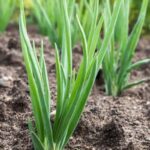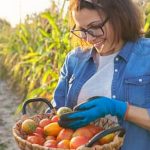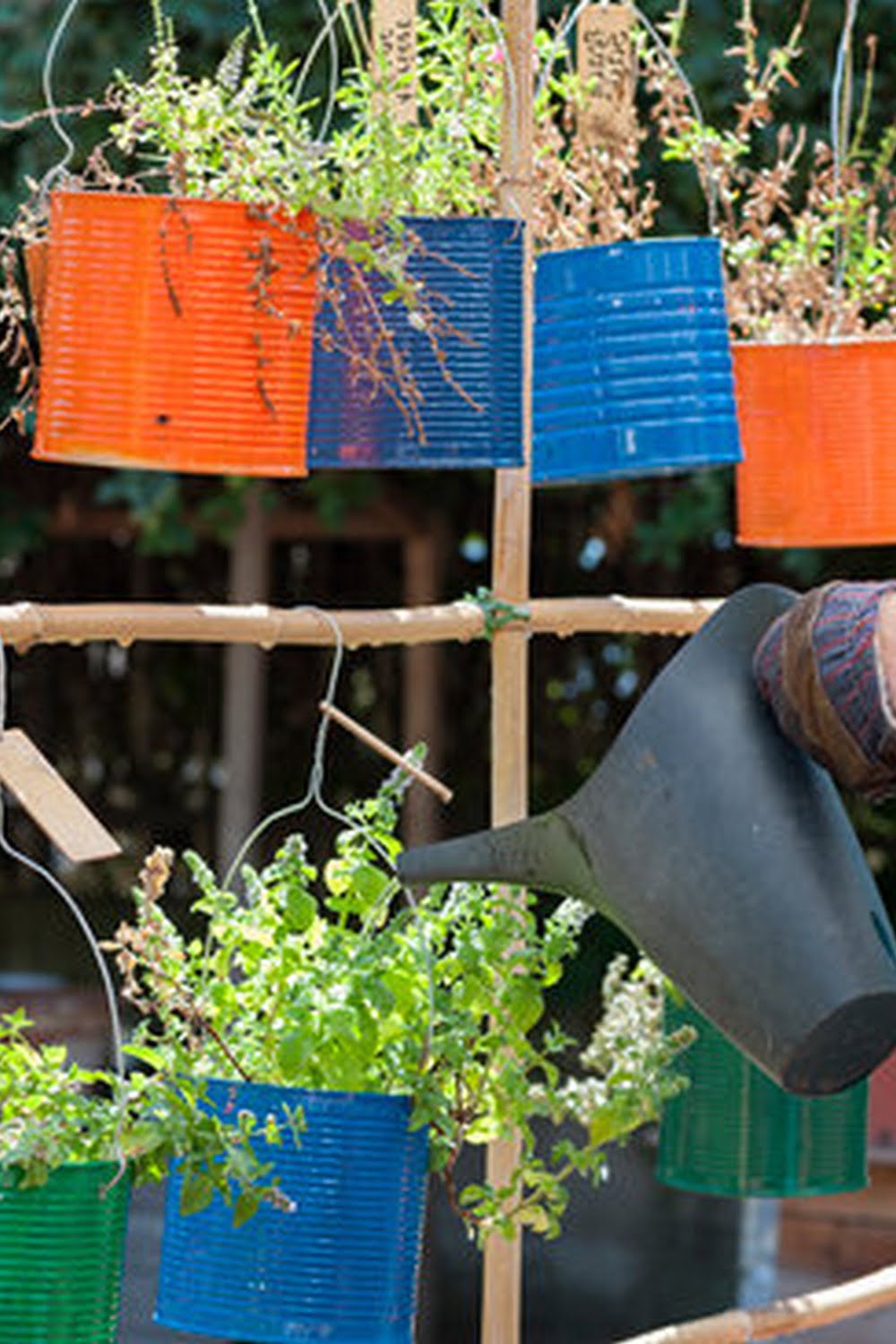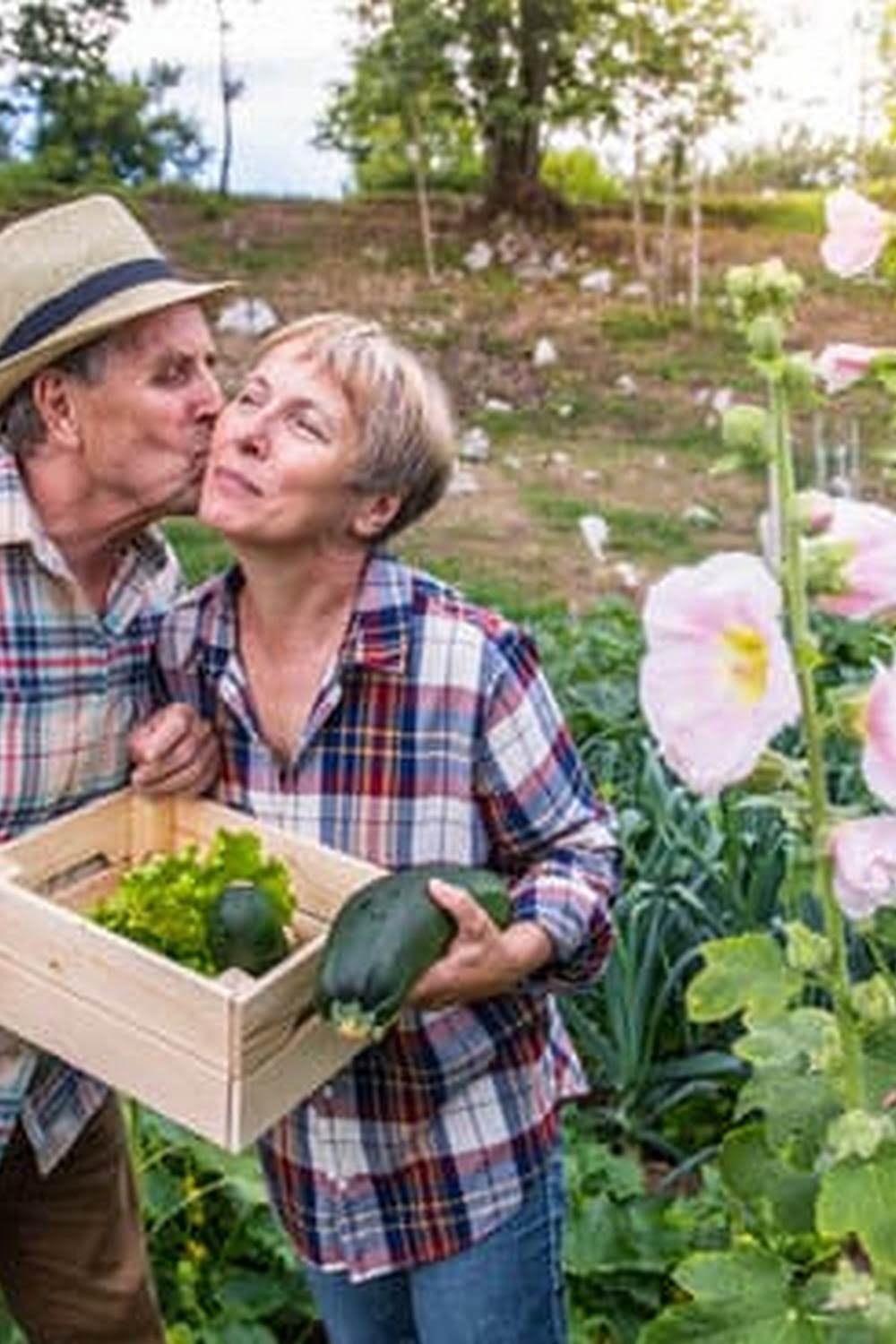Proper watering is crucial for the success and productivity of vegetable gardens. In this article, we will explore the significance of providing consistent moisture to promote healthy plant development and prevent diseases. We will discuss the specific watering needs of different vegetables and provide tips on determining the ideal frequency and amount of water.
Additionally, we will delve into various watering techniques like drip irrigation, soaker hoses, and overhead watering, exploring their benefits and drawbacks. By implementing these watering ideas, you can ensure optimal growth and bountiful harvests in your vegetable garden.
Understanding the Watering Needs of Different Vegetables
It is essential to understand the specific watering needs of different vegetables in order to provide them with the optimal amount and frequency of water. Each vegetable has unique requirements, which can vary depending on factors such as soil type, weather conditions, and stage of growth. By understanding these needs, gardeners can ensure that their vegetables receive adequate moisture for healthy development.
When it comes to determining the ideal watering frequency and amount for various vegetables, there are several factors to consider. One important factor is the stage of growth. Seedlings generally require more frequent and lighter watering compared to mature plants. As plants begin to establish themselves, they may require deeper watering less frequently.
Additionally, the type of vegetable also plays a role in its watering needs. Leafy greens such as lettuce and spinach typically have shallower root systems and therefore require more frequent but lighter watering. On the other hand, root vegetables like carrots and beets require consistent moisture but should not be overwatered as it can lead to rotting.
Here are some tips for determining the ideal watering frequency and amount for different types of vegetables:
- Conduct regular soil moisture checks by sticking your finger about an inch into the soil. If it feels dry at this depth, it’s time to water.
- Use a moisture meter or probe to get more accurate readings of soil moisture levels.
- Make note of any wilting or drooping leaves as this may indicate underwatering.
- Be mindful of weather conditions – hot and dry periods will increase water evaporation rates.
By understanding and fulfilling the unique watering needs of each vegetable, gardeners can help their plants flourish and produce bountiful harvests.
Choosing the Right Watering Techniques for Vegetable Gardens
When it comes to watering your vegetable garden, choosing the right technique is crucial for ensuring optimal growth and productivity. There are several watering methods to consider, each with its own benefits and drawbacks. In this section, we will discuss some popular watering techniques for vegetable gardens and help you decide which one suits your garden best.
1. Drip Irrigation:
Drip irrigation is a popular choice among vegetable gardeners as it provides a targeted and efficient way of delivering water directly to the roots of plants. This method involves using a network of tubes or hoses with tiny emitters that release water slowly at the base of each plant. Drip irrigation helps conserve water by minimizing evaporation and reducing weed growth.
It also prevents foliage diseases by keeping the leaves dry. However, setting up a drip irrigation system requires some initial planning and investment in materials.
2. Soaker Hoses:
Soaker hoses are another effective option for watering vegetable gardens. These hoses have tiny pores throughout their length, allowing water to seep out slowly into the soil. Soaker hoses provide even moisture distribution, which is beneficial for plants with shallow roots like lettuce or spinach.
They are also easy to install and relatively inexpensive compared to other watering methods. However, soaker hoses may not be suitable for gardens with uneven terrain or areas prone to clogging due to sediments in the water.
3. Overhead Watering:
Overhead watering, such as using sprinklers or handheld hoses with sprayers, is a common method in many vegetable gardens. It provides good coverage for larger areas and can be adjusted based on specific plant needs or weather conditions. Overhead watering is also convenient for gardeners who prefer flexibility in adjusting their watering routines easily.
However, this method can lead to water wastage through evaporation or runoff if not carefully managed. It can also contribute to foliage diseases if done late in the day when leaves have insufficient time to dry before nightfall.
Choosing the right watering technique for your vegetable garden depends on factors such as the size and layout of your garden, the specific watering needs of your plants, and your personal preferences. Consider these factors while deciding on a suitable method for your garden, and remember that it is possible to combine different techniques based on different plant requirements or areas within your garden.
Timing
Importance of Timing in Watering
Timing is a crucial factor when it comes to watering your vegetable garden. The time of day and the frequency with which you water can greatly impact the growth and overall health of your plants. By understanding the significance of timing, you can ensure that your vegetables receive the necessary moisture for optimal development.
Morning or Evening: Best Times for Watering
When considering the timing for watering your vegetable garden, it is generally recommended to do so in the early morning or late evening. This allows the plants to absorb water before the heat of the day sets in, reducing evaporation and maximizing absorption. Watering during these times also helps prevent fungal diseases by allowing foliage to dry before nightfall.
If you choose to water in the morning, aim to do it around sunrise. This ensures that any excess moisture on leaves has time to dry before temperatures rise, preventing potential damage or disease. In the evening, water approximately 2-3 hours before sunset to allow plants enough time to dry completely. Avoid watering during midday as this may lead to rapid evaporation and potential scorching of plant leaves.
Frequency of Watering
Determining how often you should water your vegetable garden depends on several factors such as weather conditions, soil type, and plant needs. It’s essential to strike a balance between providing enough moisture for healthy growth without overwatering.
To determine when it’s time to water again, check the soil moisture level by inserting your finger about an inch into the soil. If it feels dry at that depth, it’s usually an indication that watering is needed. However, different vegetables have varying water requirements due to their size, root structure, and growth stage. For example, leafy greens like lettuce may require more frequent watering than root crops like carrots.
In hot summer weather conditions or sandy soils, more frequent watering may be necessary as they tend to dry out quickly. Conversely, cooler weather or heavy clay soils may require less frequent watering. Pay attention to the appearance and behavior of your plants. If they show signs of wilting or stress even after adequate watering, adjusting your watering schedule may be necessary.
Finding the right timing and frequency for irrigating your vegetable garden takes observation and experimentation. By understanding the needs of your specific vegetables, monitoring soil moisture levels, and considering environmental factors, you can develop an effective watering routine that supports healthy plant growth.
Water Conservation Tips for Vegetable Gardens
One of the key considerations when caring for a vegetable garden is water conservation. By implementing eco-friendly practices, you can minimize water usage while ensuring healthy growth and productivity of your plants. Here are some tips to help you conserve water in your vegetable garden:
- Mulching: Applying a layer of mulch around your plants helps to retain moisture in the soil by reducing evaporation. Organic mulches like straw, wood chips, or grass clippings not only conserve water but also improve soil structure and fertility.
- Self-watering containers: Consider using self-watering containers for growing vegetables in small spaces or on balconies. These containers have built-in reservoirs that supply water directly to the roots as needed, reducing wastage through runoff or evaporation.
- Rainwater harvesting: Take advantage of rainwater by installing barrels or tanks to collect rainwater from your roof or gutters. This collected water can then be used to irrigate your vegetable garden during drier periods, reducing reliance on municipal water sources.
- Drip irrigation systems: Using a drip irrigation system can be an effective way to conserve water in vegetable gardens. Drip emitters deliver water directly to the base of plants, minimizing evaporation and ensuring that moisture reaches the roots where it’s needed most.
Implementing these water conservation tips not only benefits the environment but also saves you time and money on watering your vegetable garden. By making conscious choices about irrigation methods and utilizing natural resources like rainwater, you can enjoy a thriving vegetable garden while minimizing water waste.
| Water Conservation Tip | Description |
|---|---|
| Mulching | Applying organic mulch around plants reduces evaporation and improves soil structure. |
| Self-watering containers | Containers with built-in reservoirs supply water directly to roots, reducing runoff and evaporation. |
| Rainwater harvesting | Collect rainwater from roofs or gutters to irrigate the garden during dry periods. |
| Drip irrigation systems | Drip emitters deliver water directly to plant roots, minimizing evaporation and maximizing efficiency. |
Monitoring Soil Moisture Levels
One key aspect of achieving proper watering in vegetable gardens is monitoring soil moisture levels. Monitoring soil moisture levels allows gardeners to ensure that their plants are receiving the optimal amount of water, preventing both overwatering and underwatering. By understanding how to effectively monitor soil moisture, gardeners can make informed decisions about when and how much to water, leading to healthier and more productive vegetable gardens.
One method for monitoring soil moisture is by using a moisture meter. Moisture meters are affordable and easy-to-use tools that provide accurate readings of the moisture content in the soil. To use a moisture meter, simply insert the probe into the soil at various locations in the garden bed or container.
The meter will display a reading indicating the level of moisture in the soil. This reading can help gardeners determine if watering is necessary or if the soil still retains enough moisture.
Another popular method for monitoring soil moisture is known as the finger test. It requires no special tools – just your fingertip. Simply stick your finger about an inch deep into the soil near the plant’s root zone. If it feels dry at that depth, then it’s time to water. However, if it feels moist or damp, then there is still sufficient moisture present, and watering can be delayed.
Monitoring soil moisture levels is especially important during periods of hot weather or drought when plants may require more frequent watering. By regularly checking soil moisture, gardeners can adjust their watering schedules accordingly and ensure that their vegetables receive an adequate amount of water throughout their growth cycle.
Troubleshooting Common Watering Problems in Vegetable Gardens
One of the most common challenges that gardeners face is dealing with watering problems in their vegetable gardens. Whether it’s overwatering, underwatering, or uneven moisture distribution, these issues can have a significant impact on the health and productivity of your plants. Fortunately, there are practical solutions to address these common watering problems.
Overwatering is a common mistake that new and experienced gardeners often make. This can lead to waterlogged soil, root rot, and the development of fungal diseases. To avoid overwatering, it’s important to establish a watering schedule based on the specific needs of your vegetables and the moisture levels in your soil.
A helpful tip is to use a moisture meter or the finger test to check the moisture level before each watering. If the soil feels damp about an inch below the surface, it’s best to wait before watering again.
On the other hand, underwatering can also be detrimental to your vegetable garden. Insufficient water supply can cause stunted growth, wilting leaves, and reduced fruit production. To prevent underwatering, it’s crucial to monitor soil moisture regularly and adjust your watering schedule accordingly. During hot and dry weather conditions, you may need to increase watering frequency to meet the plants’ needs.
Uneven moisture distribution is another challenge that can affect plant growth and yield. Some areas in your garden may receive more water than others due to improper irrigation system setup or uneven terrain. To ensure even moisture distribution, consider using drip irrigation or soaker hoses that deliver water directly to the roots of plants. These methods help minimize water loss through evaporation and ensure that every plant receives adequate hydration.
By addressing these common watering problems in your vegetable garden with appropriate solutions, you can promote healthy plant growth and maximize productivity. Remember to regularly assess your plants’ needs by monitoring soil moisture levels and adjusting your watering schedule accordingly. With proper troubleshooting techniques in place, you’ll be well on your way to a thriving vegetable garden.
Seasonal Watering Tips for Vegetable Gardens
Seedling Stage
During the seedling stage, it is crucial to provide consistent moisture to encourage strong root development. Young seedlings are more vulnerable to drying out, so it is important to water them carefully. One effective watering technique during this stage is shallow watering. Gently water the area around the seedlings, making sure not to disturb them. Use a fine spray or misting nozzle to prevent soil erosion and excessive water pressure that could dislodge the delicate seedlings.
Flowering Stage
As your vegetable plants transition into the flowering stage, their water needs may increase. During this period, it is essential to ensure thorough watering, as inadequate moisture can lead to poor flower formation and subsequent fruit set. To support optimal growth and development at this stage, consider deep watering methods such as drip irrigation or soaker hoses. These techniques allow water to penetrate deep into the soil, reaching the plant’s root zone and promoting healthy flowering.
Fruiting Stage
The fruiting stage is when your vegetable plants are producing fruits or vegetables that will eventually ripen. At this stage, it becomes even more critical to maintain consistent soil moisture levels, as fluctuations in moisture can affect fruit quality and yield. Regularly monitor the soil moisture content by using a moisture meter or performing the finger test.
If the soil feels dry up to a depth of 2-3 inches (5-7 cm), it’s time for another irrigation cycle. Remember that overwatering at this stage can lead to rotting or splitting of fruits, so be mindful not to exceed the recommended watering frequency.
It’s important to note that these seasonal watering tips are general guidelines and may need adjustment based on your specific location and weather conditions. Keep an eye on local climate patterns and adapt your watering routine accordingly. By providing adequate moisture during each growth phase of your vegetable plants, you are setting the foundation for a successful harvest.
Conclusion
In conclusion, proper watering techniques play a crucial role in the success of vegetable garden cultivation. Throughout this article, we have explored the importance of consistent moisture for healthy plant development and disease prevention. We have also discussed the watering needs of different vegetables, providing tips for determining ideal watering frequency and amount.
Furthermore, we have examined various watering techniques such as drip irrigation, soaker hoses, and overhead watering. Each method has its benefits and drawbacks, and it is essential for gardeners to choose the technique that suits their specific garden needs. Additionally, we emphasized the significance of timing when it comes to watering, recommending morning or evening watering to prevent evaporation and fungal diseases.
Water conservation is another important aspect highlighted in this article. We have provided eco-friendly tips like mulching, using self-watering containers, and capturing rainwater to minimize water usage while ensuring healthy vegetable growth. Lastly, we addressed common watering problems such as overwatering and uneven moisture distribution, offering practical solutions like adjusting watering schedules or modifying irrigation systems.
In order to achieve bountiful vegetable gardens, it is vital for gardeners to implement these watering ideas. By consistently monitoring soil moisture levels using reliable tools or methods like moisture meters or the finger test, they can ensure effective water management. Adapting seasonal watering practices based on different stages of vegetable growth and changing weather patterns will also contribute to the overall success of the garden.
We encourage all readers to take these insights into consideration as they embark on their vegetable gardening journey. By implementing proper watering techniques and sharing their experiences with others in the gardening community, they can create flourishing gardens that yield an abundance of nutritious vegetables. With dedication and attention to detail in their watering practices, gardeners will be rewarded with thriving plants that reach their full potential.
Frequently Asked Questions
What is the best watering schedule for a vegetable garden?
The best watering schedule for a vegetable garden depends on various factors, including the climate, soil type, and specific needs of the plants. Generally, it is recommended to water deeply and infrequently rather than shallowly and frequently. This allows moisture to penetrate deeper into the soil, encouraging root growth and drought tolerance.
A typical guideline is to provide around 1 inch of water per week through rainfall or irrigation. However, this recommendation may vary depending on the climate and weather conditions. It is crucial to monitor the soil moisture regularly and adjust the watering schedule accordingly.
Should a vegetable garden be watered every day?
Watering a vegetable garden every day might not always be necessary or beneficial. While young seedlings might require more frequent watering until they establish their roots, mature vegetables generally benefit from less frequent but deep watering sessions. Overwatering can lead to shallow root growth, increased risk of diseases, and wastage of water resources.
It is important to assess the moisture levels in the soil before deciding to water every day. Factors such as rainfall, humidity levels, and evaporation rates should also be considered when determining the frequency of watering.
What is the best way to water a raised vegetable garden?
When it comes to watering a raised vegetable garden, there are a few effective methods to consider. One approach is drip irrigation, which involves placing hoses or pipes with small holes near the base of each plant or along rows of crops. This method delivers water directly to the root zone in a slow and controlled manner, reducing evaporation and ensuring efficient water use.
Another option is using soaker hoses or porous hose systems that allow gradual seepage into the soil around plants’ roots while minimizing surface runoff. Hand-watering using a gentle spray nozzle can also be effective in providing targeted moisture directly at ground level without damaging delicate seedlings or disturbing soil structure in raised beds. Whichever method is chosen, it’s important to ensure even coverage throughout the garden while avoiding excessive runoff or standing water that can drown plants’ roots.

If you’re looking to get into vegetable gardening, or are just looking for some tips on how to make your current garden better, then you’ve come to the right place! My name is Ethel and I have been gardening for years. In this blog, I’m going to share with you some of my best tips on how to create a successful vegetable garden.





